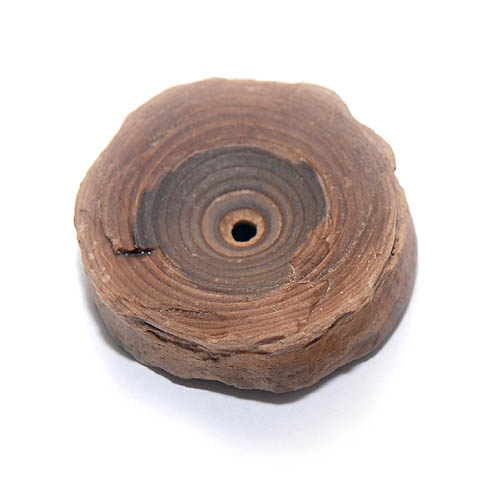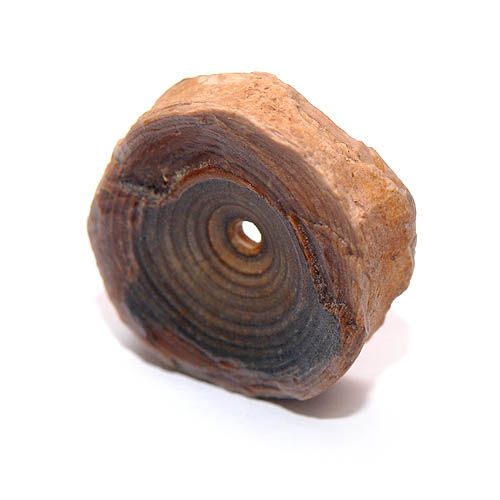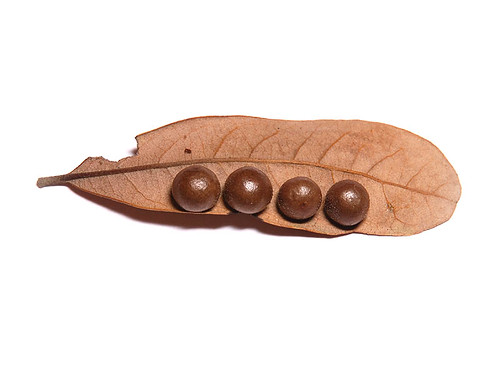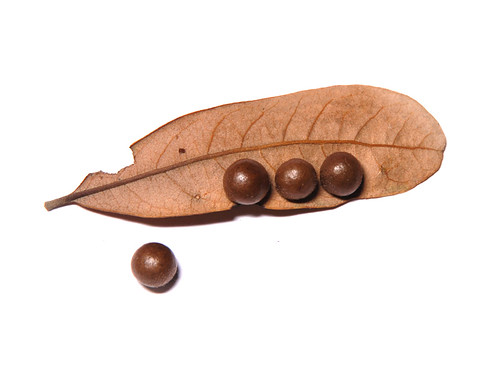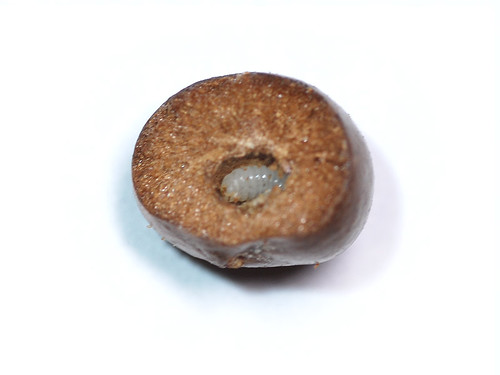I found two organic objects this week that were a mystery to me. Thanks to the Internet I now have a good idea of what they are.
Object #1
I now know this is a shark vertebra.
Object #2
This is a Gall Wasp Larva.
Galls occur on a wide variety of plants. These
growths may be the result of fungi, bacteria,
nematodes or mites, but insects are the prime cause.
Gall-forming insects include aphids, phylloxerans,
psyllids, midges (gall gnats) and cynipid wasps (gall
wasps) (Plate 4). Of the more than 2,000
gall-producing insects in the United States, l,500 are
either gall gnats or gall wasps. About 80 percent of
the gall wasps produce galls specifically on oak trees.
In fact, 60 percent of all known insect galls occur in
the oak family and 30 percent occur in the daisy, rose
and willow families. These growths are called galls
because they contain large amounts of tannin, which
has a very bitter taste. Long ago, they were known as
"gallnuts" because they tasted as bitter as gall.
Plant galls are abnormal growths of plant cells
formed as a response to the insect's stimulus caused
by egg laying, or larvae or nymphs feeding. In the
spring, before the leaves are fully developed, eggs are
laid in the leaf or stem. Gall production is believed to
result when the cambium and other meristematic
tissues react to stimuli produced by the larvae and
cause the abnormal growths. The immature insects
often can be found in a cell or cells within the
developing gall. After a brief period of cell growth,
all development stops. The insect becomes enclosed
by the gall and feeds only on gall tissue during its
development. Small holes on the outside of the gall
indicate that the adult insects have emerged.
Galls are found most commonly on the stems and
leaves, but also occur on trunks, flowers, fruit,
leaf-shoot terminals, petioles and roots. Each
gall-forming insect produces a gall that is
characteristic of that particular insect. Some galls
may be two inches in diameter, while others are so
small they are rarely noticed. They occur in almost
every conceivable form and color, and their shapes
range from spheres to tubes. The surface may be
smooth, hairy or covered with spines. Gall
susceptibility varies greatly between species in the
same location. This is probably due to the general
condition of the particular plant and its natural
resistance.
Galls seem to cause a lot of concern to the
general public. Generally they do not seriously harm
the plant. Most ornamental plants and trees are not
apparently injured even by relatively large numbers
of galls.

